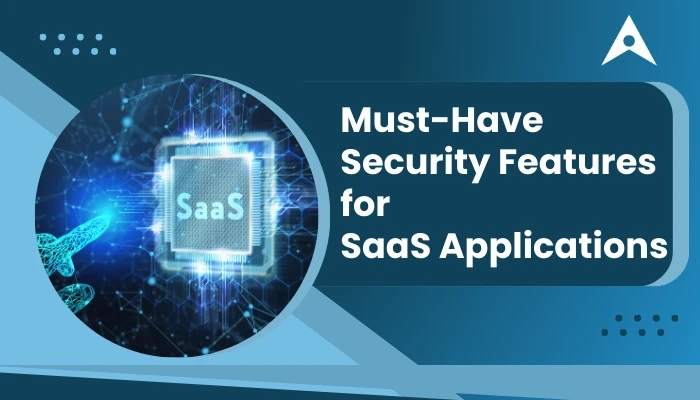SaaS or Software-as-a-Service solutions are cloud-based applications that help businesses to offer their end users a much more flexible, scalable, and cost-effective application. It has recently become an indispensable part of modern SaaS business operations that eliminates the need for local cloud installation or maintenance. However, many businesses fail at protecting this data from rising cyber threats.
This is why you should invest in essential security features while building your next future-ready SaaS application. Some of the key security features are a zero-trust approach, SaaS Security Posture Management, Client-Side Protection, and more. But how do these security features differ from each other? And what benefits do they bring when you implement these into your existing SaaS environment? In this blog, we will break down each feature and help you understand which one of these is the best fit for your specific business needs and requirements.
Why Security Matters for Every SaaS Application?
SaaS security is the practice of protecting various SaaS (Software-as-a-Service) applications or platforms against any type of cyber threat and unauthorized access.
Security of SaaS solutions is essential as the corporate data is uploaded into these applications, and a cyber threat or security breach can risk the sensitive company’s data. This can lead to severe financial losses and also cause users to lose their trust in the brand itself, and a complete disruption in long-term relationships among the end users.
Moreover, businesses that don’t have an effective security strategy are also non-compliant with all the legal regulatory bodies. By not following regulatory standards, your business can suffer from serious consequences such as hefty fines and legal liabilities.
Top SaaS Security Features: A Curated List
1. Implementing a Zero-Trust Approach
The Zero-Trust approach is a cybersecurity model that enforces security policies for each individual, which helps you to maintain a strict access control system. This means that by default, systems treat every user as the same and do not trust anyone till they complete the overall identification process. By utilizing SaaS development services and this security feature, you can prevent internal and external data breaches, thus resulting in zero chances for potential attacks.
2. Monitoring Data Sharing
Over 76% users do not trust SaaS platforms with their personal data due to their data-related policies. To gather a maximum user base and detect and prevent threats or unauthorized access, you should regularly monitor and audit data sharing policies and activities. This will help you ensure that your system is safe, and only authorized individuals can access the data or the system.
3.Ensuring Client-Side Protection
SaaS applications are usually built using 3rd-party JavaScript providers for embedding functionalities such as analytics, chat, tracking, and more. These JS scripts run inside users’ browsers, and if compromised, they can inject malicious code or manipulate the SaaS’s overall UI codebase. This can further lead to the theft of sensitive data.
This is why you should make client-side protection a priority and conduct continuous scanning of the JS scripts, and implement content security policies. Some of the content security policies are:
- Img-src
- Script-src
- Object-src
- Default-src
- Connect-src
4.Employing SaaS Security Posture Management
SaaS Security Posture Management, or commonly known as SSPM, is a type of automated security tool for monitoring security risks in SaaS apps. By utilizing these SSPM tools, you can identify misconfigurations, manage permissions, and ensure complete regulatory compliance.
Also, these tools provide you with a single dashboard that you can use for managing multiple SaaS applications at the same time. This enables maintaining a strong defense system and ensures that you can effectively handle various security operations together.
5.Integrating Artificial Intelligence (AI)
Integration of AI-driven strategies within modern SaaS apps is becoming a crucial requirement nowadays. Using AI’s predictive analytics capabilities and machine learning algorithms enables you to identify and predict threats before they escalate and cause major financial losses.
AI systems can analyze massive amounts of data, spot anomalies, and use it smart approach to counter any cyber threat. Moreover, some organizations even utilize AI agents to have access to real-time insights and trigger workflows whenever there is an unusual spike in usage or performance degradation of the application.
Closing Statement
To secure user data, you need to lay down a strong security foundation. It should come with smart intelligence from AI to predict and prevent threats early, to enhanced flexibility to adapt to the evolving cyber threats or risks. Employing SSPM tools, AI integration, and client-side protection are some of the advanced security measures that we have discussed above.
Additionally, you should consider partnering with a SaaS development company, as they can help you choose the right security feature or a combination specific to your organization’s goals. However, before leveraging one of these or a combination of these features, you should first conduct an in-depth assessment of your current SaaS infrastructure. This will help you identify any vulnerabilities and align your specific goals with the right type of security requirement.


